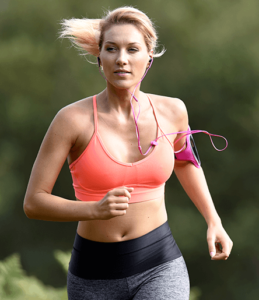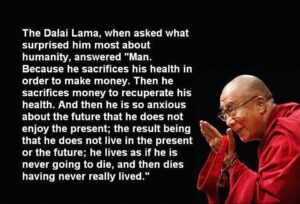The Power Of Consistent Exercise
There’s no doubt that getting your heart pumping and blood moving through exercise has a long list of health benefits. It controls weight, combats health conditions and diseases, improves mood, boosts energy, promotes better sleep, and more. But many people don’t realize that lack of exercise can disrupt the body’s rhythms. Each of our bodies has circadian rhythms – physical, mental and behavioral changes that follow a roughly 24-hour cycle, responding primarily to light and darkness. It’s why we naturally fall asleep during the night and rise during the daylight. But our heartbeats, hormones, hunger, alertness, digestion, fatigue and other bodily functions are also influenced by our circadian rhythms.
According to a 2009 study published in Proceedings of the National Academy of Sciences, exercise may affect how and when we move, even when we aren’t exercising. The findings suggest exercise may help our bodies recognize the optimal times to move and be still. Dr. Frank Scheer, an assistant professor at Harvard Medical School and director of the Medical Chronobiology Program at Brigham and the Women’s Hospital in Boston, oversaw the study along with colleagues. They had a range of people from young adults to older people wear activity monitors for a week and tracked their movements as the volunteers stuck to their normal daily activities. As noted in a New York Times article, “The young people’s bodies seemed to be somehow remembering and responding to what that body had just been doing, whether sitting or moving, and then calculating a new, appropriate response – moving or sitting.
In doing so, the researchers felt, the body created a healthy, dynamic circadian pattern.” But the results weren’t the same for the older people in the study. Their memory patterns were reduced drastically with age and their movements were more random with less movement during the day and more movement at night. However, the researchers wanted to determine if these changes were caused solely by aging. Dr. Scheer and his colleagues, Kun Hu of Harvard University and Johanna Meijer of Leiden University, performed a new study this year. They monitored the movement patterns of mice ranging from six months to two years in age, which is equivalent to human young adults and aging seniors. For one month, they left a running wheel in the mice’s cage and found that the young mice often ran and developed patterns of peaks and valleys in their activity levels. The older mice had similar peaks and valleys, but they were more random. However, when the researchers removed the running wheel, all of the mice started showing more random patterns of movement, and the young mice had activity levels similar to the older mice. Once the researchers put the wheel back into the cage, all of the mice began exercising again and returned to healthy patterns of movements. According to Dr. Scheer, the finding suggests that exercise affects daily movement patterns more than age does.
Although the researchers don’t know how exercise might affect the body’s internal clocks, the study does suggest that exercise improves rhythms. Experts also note that there’s an ideal time of day to exercise based on our circadian rhythms, but many disagree on exactly when that is. Dr. Phyllis Zee of Northwestern University believes that the best time to work out is in the late afternoon because the body temperature is between one and two degrees warmer than in the morning, making muscles in the body more supple and lowering the risk of injury. Working out when the body temperature is at its peak, which is usually about 4pm or 5pm, can help people have optimal endurance, maximum flexibility and heightened injury resistance. However, some health experts argue that working out in the morning will jump start burning calories for the day and help you sustain a higher metabolic rate later in the day. Research has also shown that morning exercisers have a greater degree of consistency since afternoon and evening workouts are more likely to conflict with other responsibilities as the day progresses. But everyone’s circadian rhythm is different, and although there may be an ideal time to prevent injury and achieve peak performance, the most important thing is to exercise consistently.
Whether you need that 6am morning workout to clear your head and get ready for your day, or you prefer to wait until the afternoon because you feel most awake, just make sure you get your workout in. If you do prefer to exercise in the morning, make sure to warm up muscles that might be cool and tight from sleep to reduce the risk of injury. Try exercising at different times of day and use your body clock as a guide to determine what works best for you.
Get more information @



Leave a Reply